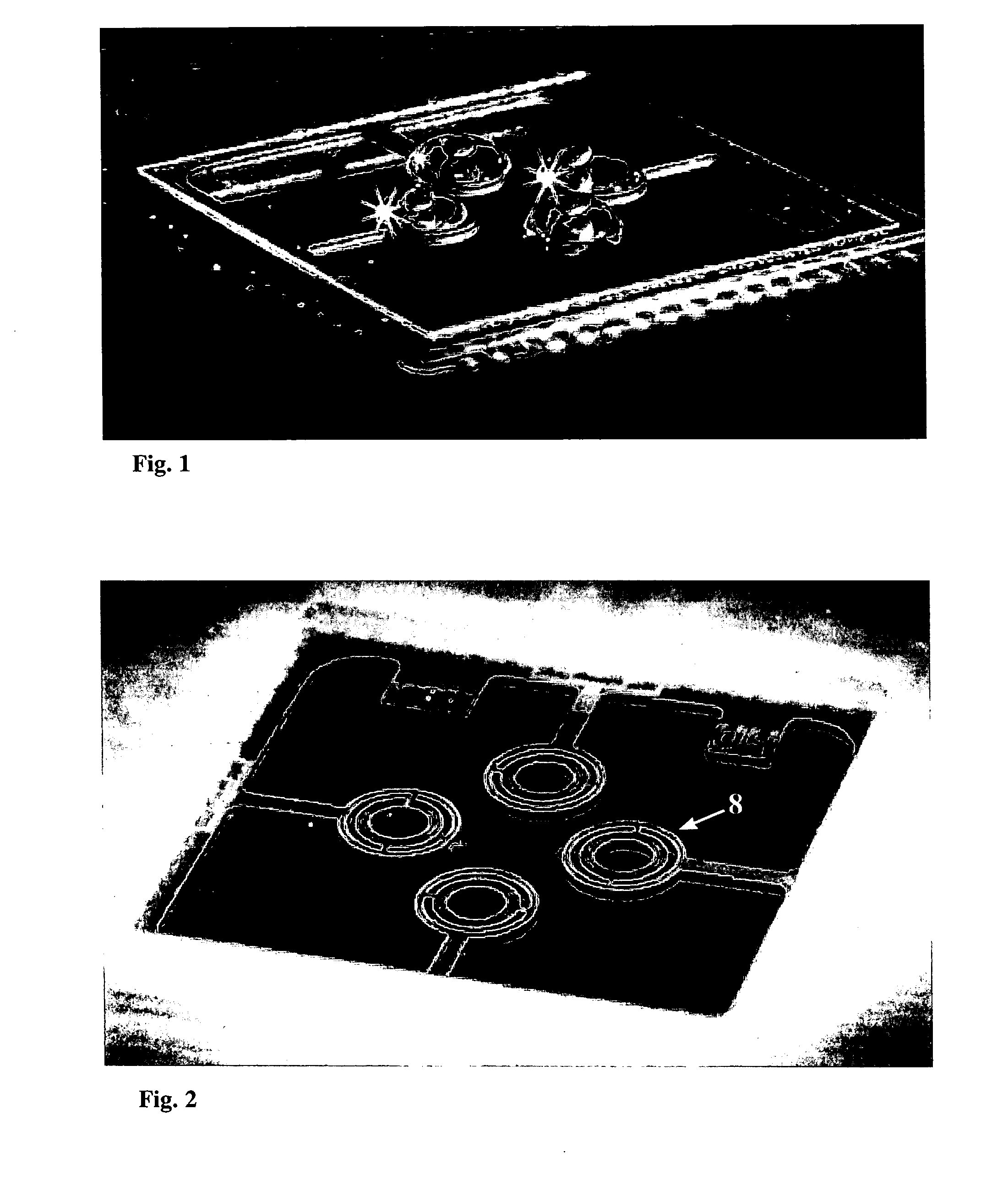Apparatus for regulating the temperature of a biological and/or chemical sample and method of using the same
a technology for biological and/or chemical samples, applied in the direction of material thermal analysis, withdrawing sample devices, material testing goods, etc., can solve the problems of long transition time, unwanted by-products of pcr reaction, and difficult to achieve high cooling ra
- Summary
- Abstract
- Description
- Claims
- Application Information
AI Technical Summary
Benefits of technology
Problems solved by technology
Method used
Image
Examples
examples
Finite Element Analysis
[0067] A simple donut structure consisting of four heaters each connected by a beam to the substrate, as well as a double donut shape with the heater and sensor located at the inner donut (FIG. 4), were modeled by the Finite Element Analysis (FEA) software, ANSYS version 9.0. Elements SHELL-57 with real constants of 450 μm for silicon and 170 μm for glass were used. Typical boundary conditions for the model were set at the chip perimeter to 25° C. and adequate amplitude of heat flux was dissipated in all four donut shapes to set their temperatures at 94° C., 72° C. and 55° C.
[0068] For the simple donut structure the greatest thermal gradient was found to be along the beam axis. There was also a thermal gradient along the donut shape causing a relatively high temperature nonuniformity of 1° C. within the area of interest.
[0069] The two donuts of the double donut shape are connected by two beams with thermal conductivities of at least half that of the inner d...
PUM
 Login to View More
Login to View More Abstract
Description
Claims
Application Information
 Login to View More
Login to View More - R&D
- Intellectual Property
- Life Sciences
- Materials
- Tech Scout
- Unparalleled Data Quality
- Higher Quality Content
- 60% Fewer Hallucinations
Browse by: Latest US Patents, China's latest patents, Technical Efficacy Thesaurus, Application Domain, Technology Topic, Popular Technical Reports.
© 2025 PatSnap. All rights reserved.Legal|Privacy policy|Modern Slavery Act Transparency Statement|Sitemap|About US| Contact US: help@patsnap.com



